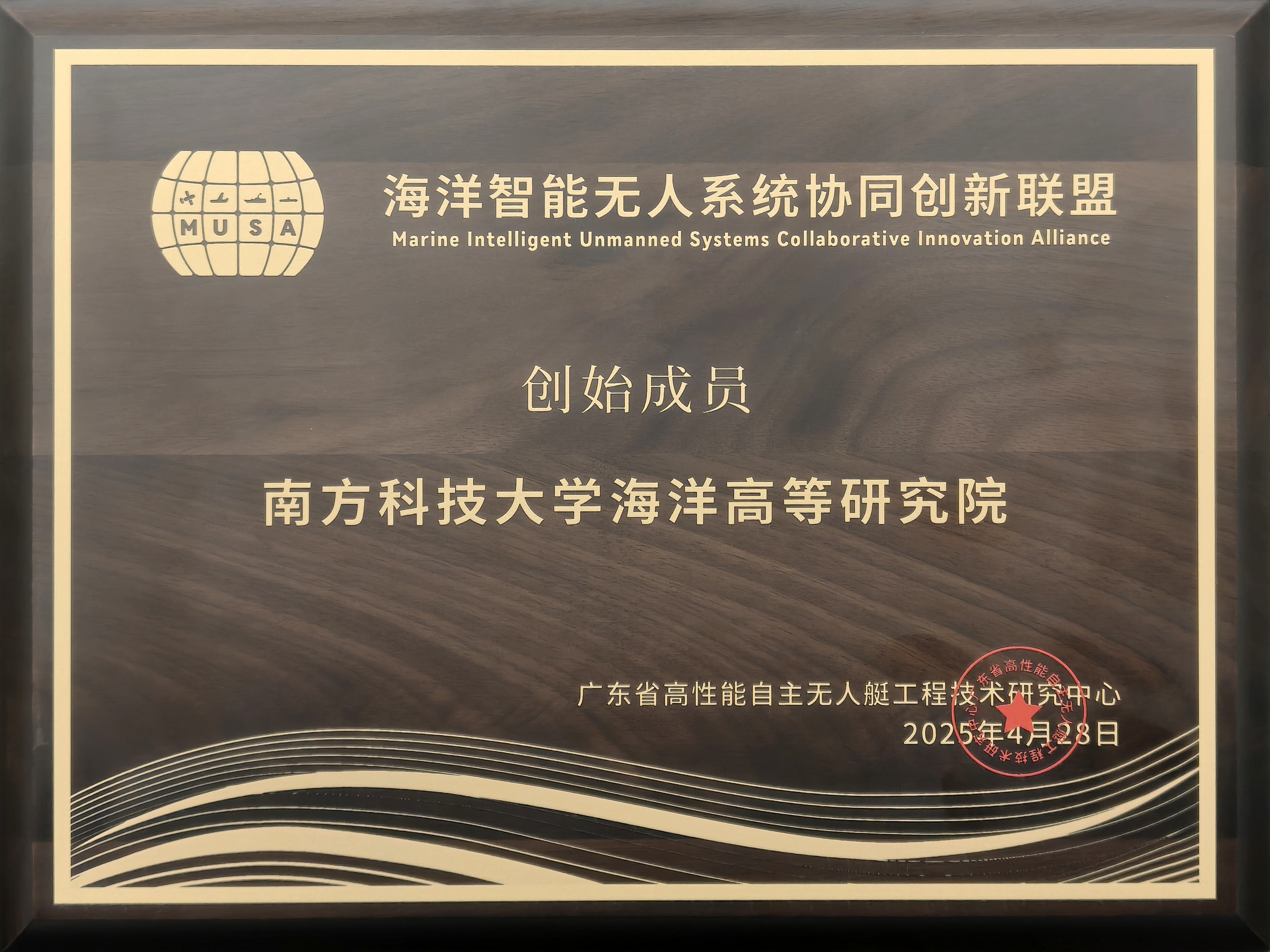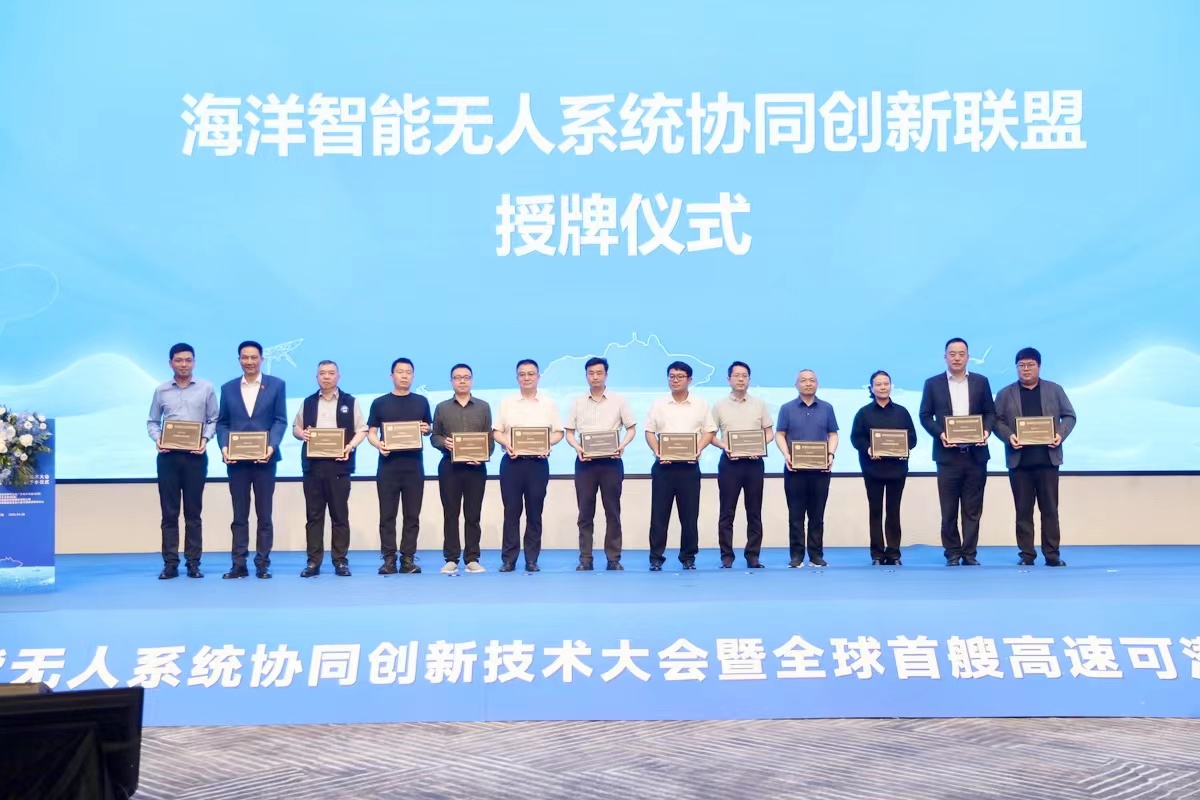第一时间关注海洋高等研究院的最新动态
2025/05/06 浏览量: 1133
On April 28, the Marine Intelligent Unmanned Systems Collaborative Innovation Alliance was officially launched in Zhuhai. As a founding member, the Advanced Institute for Ocean Research (AIOR) at the Southern University of Science and Technology (SUSTech) joins 38 research institutes and enterprises to drive breakthroughs in key technologies for intelligent, collaborative unmanned marine systems.
Jian LIN, Director of AIOR and Chair Professor of the Department of Ocean Science and Engineering at SUSTech, accepted the founding plaque on behalf of the institute and delivered a keynote speech at the event.
SUSTech was recently approved to launch a new undergraduate program in Artificial Intelligence (AI) as part of its broader “AI + X” talent development initiative.
As early as 2022, Professor Jian LIN introduced the “Intelligent Ocean Exploration” course for both undergraduate and graduate students. The course covers core AI concepts such as neural networks, deep learning, large language models, and algorithmic computation, while highlighting their practical applications in ocean science and engineering. It was selected as one of SUSTech’s top-quality undergraduate courses for the Spring 2024 semester and is available as a shared elective for university students across Shenzhen in Spring 2025.
AIOR at SUSTech will lead the launch of an experimental voyage series for the “Integrated Intelligent Swarm of UAVs (unmanned aerial vehicles), USVs (unmanned surface vessels), and UUVs (unmanned underwater vehicles)” in June 2025. The mission will take place in the northern South China Sea, focusing on achieving intelligent multi-platform collaboration among unmanned systems operating across air, sea, and seabed environments.
This initiative aims to address critical technological challenges in cross-domain coordination while enhancing the effectiveness of ocean applications, including environmental monitoring, resource exploration, and disaster early warning. The effort will provide key technologies for building a next-generation, three-dimensional ocean observation network, accelerating the advancement of the ocean science and technology sector into the AI era.

